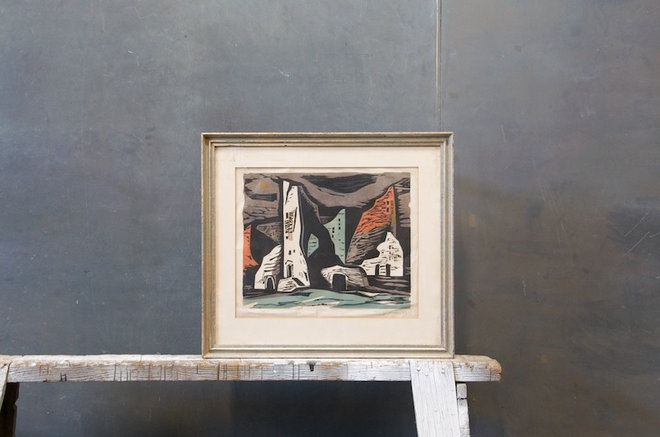Don't let a lack of knowledge or limited funds keep you from the joy of owning art. This guide will put you on the collector's path.
Starting a collection of art that speaks to you is a worthy goal, but it may seem out of reach ... and more than a little confusing. Where do you begin? What is the difference between an original work, a limited-edition print and a poster? Where do you shop for art — especially if you don't have thousands of dollars to spend on a single piece? We will tackle these questions and more in this handy art-buying guide, including resources for collecting on a smaller budget.
Explore your taste. Before diving in and making a purchase, spend some time getting to know what sort of work you respond to. Make weekend dates to browse local art museums and galleries, pick up an art magazine or flip through a stack of art books.
Are there certain styles, colors or subjects that draw you in? Do you gravitate toward black and white photography, modern abstract paintings, still lifes? Note what you love. Exploring and observing will build confidence, not to mention expose you to new styles and artists you might never have found otherwise.
Are there certain styles, colors or subjects that draw you in? Do you gravitate toward black and white photography, modern abstract paintings, still lifes? Note what you love. Exploring and observing will build confidence, not to mention expose you to new styles and artists you might never have found otherwise.
Types of Art
Original art (and why it costs so much). Original work includes any art that is one of a kind: original paintings, drawings, sculptures and more. Why the high price? To draw a parallel to the literary world, imagine if J.K. Rowling could sell only one copy of the Harry Potter series — how much do you think that would be worth?
An artist can profit only once from the sale of an original work, such as a painting on canvas; then it's gone. Even if the work grows in value over time, it is the collector who profits. If you understand that, it makes sense for original pieces to have a higher price than prints or reproductions.
Original art (and why it costs so much). Original work includes any art that is one of a kind: original paintings, drawings, sculptures and more. Why the high price? To draw a parallel to the literary world, imagine if J.K. Rowling could sell only one copy of the Harry Potter series — how much do you think that would be worth?
An artist can profit only once from the sale of an original work, such as a painting on canvas; then it's gone. Even if the work grows in value over time, it is the collector who profits. If you understand that, it makes sense for original pieces to have a higher price than prints or reproductions.
Prints. A true print, while not one of a kind, is still an original work of art. The artist uses any one of a number of methods to create an original image on a surface like wood, rubber, stone or metal, applies color and then creates a print on paper.
Print types include engravings, lithographs, screen prints, aquatints, linocuts and woodblock prints.
Print types include engravings, lithographs, screen prints, aquatints, linocuts and woodblock prints.
Limited-edition prints. If the artist sets a limit for the number of prints he or she will make with a given image, that is known as a limited edition. Of course, today the lines are being blurred, with artists using digital media to create original works, and a piece may be called a limited-edition print even if it was created or reproduced digitally — that is, it's not one of the types listed earlier.
Term to know: A run includes all prints made from a given work. For instance, "a run of 50" means the artist created 50 limited-edition prints from the original piece.
Term to know: A run includes all prints made from a given work. For instance, "a run of 50" means the artist created 50 limited-edition prints from the original piece.
Posters and reproductions. When an artist creates an original work and reproduces it (usually digitally) without limiting the run, it is a poster, or a reproduction. Posters are a great way to explore art, since they are so budget friendly — once you build up a bit of a collection, you could even swap out art seasonally.
Fine art photography. Since photographs by their very nature are easily reproduced, it is up to the photographer to limit the number of prints created with a certain image. Generally, the fewer prints available, the higher the price.







